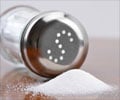Cilnidipine Medication Information
Learn everything you need to know about Cilnidipine-pronunciation, uses, dosage guidelines, indications, and when to take or avoid it.
Get up-to-date information on side effects, precautions, warnings, and proper storage to ensure safe usage.
Explore Cilnidipine brand names commonly used in India and internationally, along with detailed pricing information. Consult your healthcare provider for tailored medical advice.
Generic Name : Cilnidipine Therapeutic Classification : Anti- HypertensivesBrand Names or Trade Names of Cilnidipine
India :
Overview of Cilnidipine
Cilnidipine belongs to a class of new calcium channel blockers which is used to treat hypertension in adults.Why is Cilnidipine Prescribed? (Indications)
Cilnidipine is a calcium antagonist or calcium channel blocker prescribed to treat the high blood pressure in patients with essential hypertension. In contrast to most other calcium channel blockers, cilnidipine blocks two types of calcium channels – the L type channels in the blood vessels and the N type channels in the nervous tissue.It relaxes the blood vessels, therefore reducing the stress on the heart.
It is approved for use in some countries including India, but not in the United States.
When should Cilnidipine not be taken? (Contraindications)
Cilnidipine should not be taken mainly in pre-existing cardiac illnesses such as:• Acute unstable angina (chest pain due to spasms of the artery supplying the heart muscle)
• Cardiogenic shock, which is low blood pressure due to a cardiac cause
• Severe aortic stenosis, which is narrowing of the valve between the left ventricle of the heart and the aorta
• Recent heart attack
Also, it is not recommended in patients allergic to this drug.
What is the dosage of Cilnidipine?
The usual dosage for adults is 5 - 10mg once daily.The maximum dosage should not exceed 20 mg per day and is recommended only when it is required.
How should Cilnidipine be taken?
Cilnidipine comes in the form of a tablet and to be taken orally either once daily or as directed by the physician.This drug can be taken either before or after meals.
What are the warnings and precautions for Cilnidipine?
• Cilnidipine should be used with caution in patients with hypotension (low blood pressure), heart failure and poor cardiac reserve.• Cilnidipine should be discontinued in patients who feel chest pain following the administration of the drug.
• Sudden withdrawal of the drug to be avoided as this may exacerbate angina.
What are the side effects of Cilnidipine?
General: Gastrointestinal disturbances, lethargy, increased frequency or urination, muscle aches, impotence, abnormal liver function, allergic reactionEye: Transient blindness, eye pain
Cardio vascular system: Low blood pressure, palpitations, chest pain Central Nervous System: Dizziness, headache, depression, reduced blood flow to the brain
Dermatological: Flushing, thickening of gums
What are the other precautions for Cilnidipine?
• Cilnidipine interacts with the results of vanillyl mandelic acid test which is used to detect tumors such as pheochromocytoma and neuroblastoma.• Therefore, this drug should be avoided for 72 hours before sample collection but the patient should be monitored intensively in a clinical setting.
What are the Drug Interactions of Cilnidipine?
Cilnidipine interacts with the following drugs:• Antipsychotic drugs combined with cilnidipine may result in low blood pressure
• Antidiabetes medications along with this drug may result in changes in glucose levels, therefore monitoring of glucose levels may be required
• Antiepileptic drugs such as phenytoin and carbamazepine and other drugs include rifampin, quinidine and aldesleukin should also be used with caution along with cilnidipine
What are the storage conditions for Cilnidipine?
Store the medicine in a tightly closed container at room temperature.Protect from excess heat and light. Keep out of reach of children.










